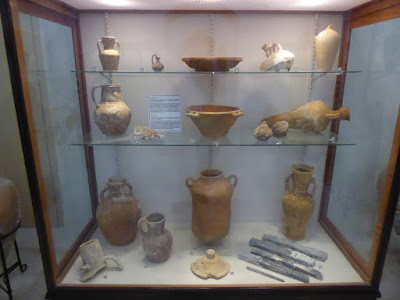For
Ggantija read
Gigantic, that is, made by giants. That's what the locals made of these megaliths, 5 millennia later, just as the classical Greeks thought the
Mycenean strongholds they found had been built by a race of giants. The temple complex at Ggantija is perhaps Malta's oldest, reckoned as dating from 3,500 BC, and therefore a good bit older than, say, Stonehenge. The dates on all these things keep changing. I always think of our experience at
Skara Brae, where, at the outset of our ranger-led tour, she announced we could simply add a thousand years to all the dates on the signage: a new calibration was in effect. Anyhow, from Malta to Portugal to Brittany to Ireland and the UK and beyond, western Europe was seeing its great three millennia of megalith building. We've seen most of these structures. Those that are so far known. Malta's are among the most distinctive and interesting: oriented uniformly to the southeast, clover-leaf in design, with "apses," now generally thought to have been roofed-over in corballed fashion. Some say they were "temples" in a fertility rite...corpulent female votive offerings here and there. Who knows?
Anyhow, the Ggantija complex has a great museum preceding the self-guided tour, and here are some highlights.
 |
| Entrance to the complex; yes, another of Malta's World Heritage Sites |
 |
| The megalithic world...in Malta |
 |
| One of the more famous of the corpulent figures |
 |
Other votives...reminding me a little of Cycladean
figurines we've seen elsewhere in the Mediterranean |
 |
| Probably not non-stick |
 |
| A selection of the ladies found at Ggantija |
 |
| Also found at Gantija |
 |
| Extrapolation |
 |
Simple foods, simply prepared; strangely, very strangely,
seafood play virtually no role in their diet (like the Vikings
in Greenland?) |
 |
| More implements |
 |
| And ornamennts |
 |
The complex at Ggantija has suffered much destruction, even in the modern era;
much of what is known comes from a series of watercolors by the early 19th
century German artist Charles Frederick de Brocktorff |
 |
| Orthostat from one of the entrances |

















































